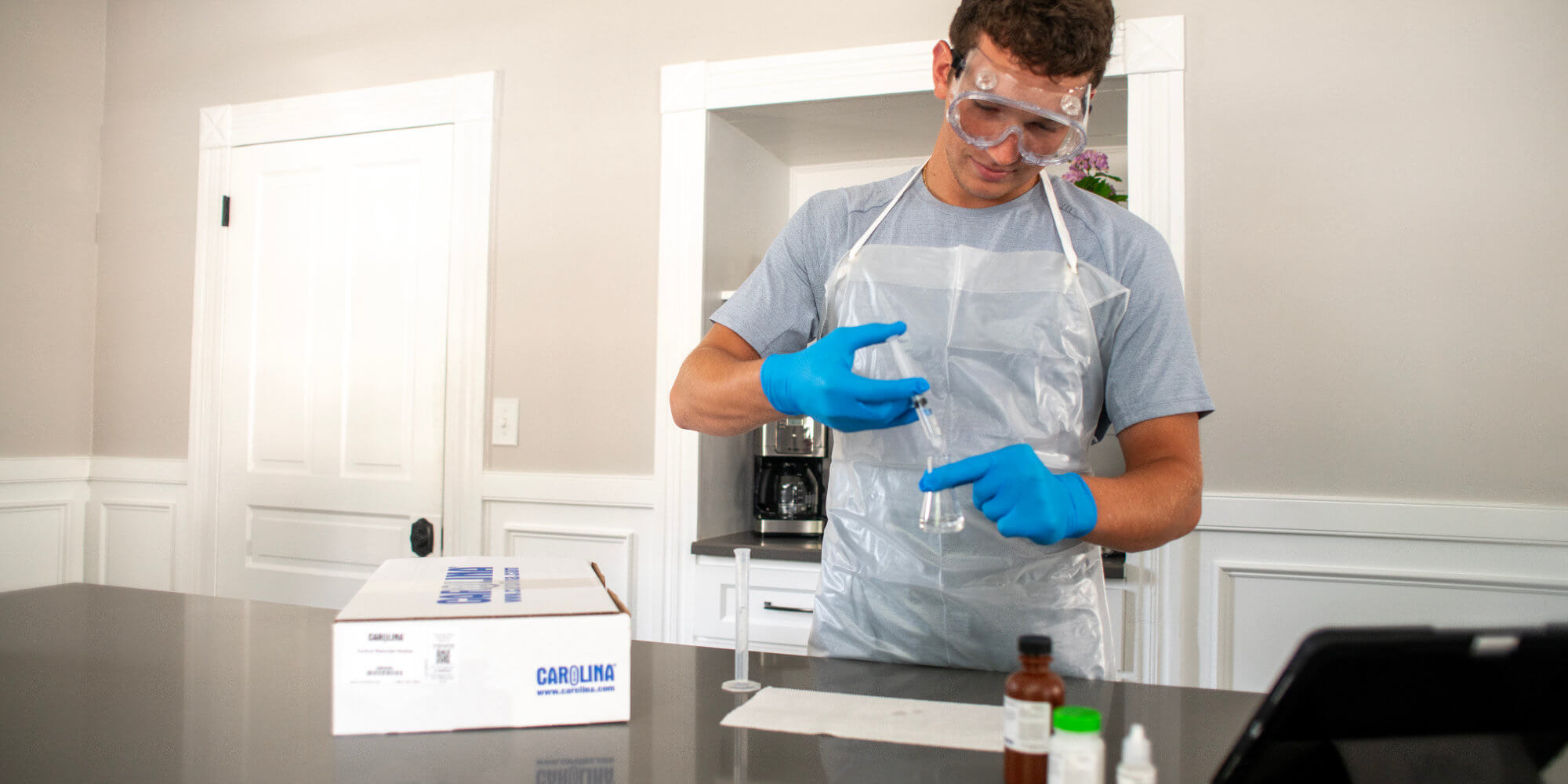Even before schools around the world got an abrupt introduction to remote learning in 2020, distance learning wasn’t an entirely unfamiliar concept. Colleges had already tapped into the benefits of virtual learning and at-home kits, tools that have now grown in popularity even outside secondary education, especially to excite students with STEM.
With education becoming more flexible and technology-enabled, the question we’ve asked our team—and that many educators have probably asked themselves—is How can science, so dependent on hands-on learning and labs, successfully adapt to distance learning?
With hands-on learning and labs successfully adapted to distance learners, of course. Before we tell you how we accomplished it for high schools, let’s talk for a moment about why remote science is so worth pursuing in the first place.
What Remote Learning Achieves
- Accessibility and Equity: Nationwide—and globally—educators are striving to not only educate but engage students who live in rural, underserved, or geographically-dispersed areas. The hands-on lab kits that are so integral to Carolina’s distance learning programs are designed to bring students closer to the classroom experience when they’re far from the classroom. Having the option to reach students virtually also provides opportunities where school facilities or budgets can’t quite support on-site instruction.
- Flexibility for Students and Schools: Distance learning kits support nontraditional learners like dual enrollment, homeschool, or adult students, helping them get a high-quality science experience in the way that works for them. Adopting a hybrid learning environment also allows schools to seamlessly adapt to disruptions like weather or health concerns.
- Scalability for Institutions: Course offerings limited by not having full lab facilities? At-home kits create a full lab in students’ homes, allowing colleges and districts to expand their course offerings without skimping on quality instruction. Reaching students this way also supports workforce development and CTE programs by adapting the instruction to a format that can reach more future professionals.
Now that we’ve laid out the ways successful distance learning can optimize instruction for your students, here are approaches you can consider to bring the concept to life.
Tailoring Virtual Learning to Meet the Need
- Virtual Labs and Simulations: Introducing virtual labs and simulations offers a scalable, cost-effective, and interactive experience, but can come with reduced tactile experience and the inability to build lab skills.
- Hybrid Approaches: Hybrid learning combines in-person intensives with at-home assignments, helping you find a happy medium between the flexibility of online courses and giving students hands-on experiences.
- Hands-On Distance Learning Kits: This option from Carolina is safe, standards-aligned, and integrated with existing curriculum. Specifically designed for remote and hybrid environments, these kits include everything students need to conduct experiments at home. From biology to chemistry, learners can explore scientific concepts in guided, engaging investigations. Teachers are supported with a comprehensive set of digital resources including manuals, videos, and assessments.
Bring Science to Life—Even from a Distance!
Teaching high school science remotely comes with challenges, but the right tools can give students the hands-on learning experiences that make science exciting and safe when you’re not in the same room.
Whether you’re teaching in a fully virtual classroom or in a hybrid classroom, Carolina Distance Learning® kits make it easy to deliver meaningful lab experiences.
Built for Teachers by Teachers

Carolina Distance Learning® High School Kits are:
- Easy to integrate into your existing lesson plans
- Next Generation Science Standards-aligned
- Compatible with OpenStax™ and Khan Academy® curriculum
- Skill-building options for CTE students
- Supported with digital manuals and learning resources
- Safe and grade-level appropriate for high school students
Hands-on learning boosts engagement, deepens understanding, and builds critical thinking skills. Using these kits, your students won’t just read about science, they’ll do science.
Get Started
Explore the full collection and bring the lab to your students—wherever they are.
About The Author
Carolina Staff
Carolina is teamed with teachers and continually provides valuable resources–articles, activities, and how-to videos–to help teachers in their classroom.

